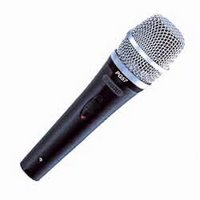Tie mic feedback - help!
As a first port of call, we would probably NOT suggest adding a Graphic Equaliser to reduce feedback, although of course they can help!
There are a lot of things you can do without resortingEQ to reduce feedback.
- Ensure the speakers are in front of all microphones at all times
- Keep the "on stage" sound level down as low as possible - musicians to play quietly, keep foldback monitors low volume
- Position the lapel microphone high up on the collar (and slightly to the side) so that it is very close to the sound source. This means that the microphone level in the mixer can be kept lower
You need to be very careful if heading down the EQ to reduce feedback route as it is possible to end up with a weak sound if you are not careful - really do think deeply about the actual causes of the feedback first.
However, if you really are having difficulties then a simple EQ can help to give you a little more headroom before feedback occurs. You need as fine frequency band control as possible - 31 is good - so that you don't alter frequencies which are not a problem. See....
Samson 31 Band Graphic Equaliser
Alternatively, a purpose built feedback destroyer can remove feedback without damaging the overall sound of your mix. See...
Samson Advanced Feedback Managment Unit
Finally, using a directional (cardioid) lapel microphone can also help to prevent feedback problems. The EW122G2 Sennheiser lapel microphone is a cardioid microphone, i.e. it has directional pickup. Don't forget that you have to position the microphone facing the right direction!
Sennheiser EW122G2 UHF radio microphone
Hope that this helps!
Tim


